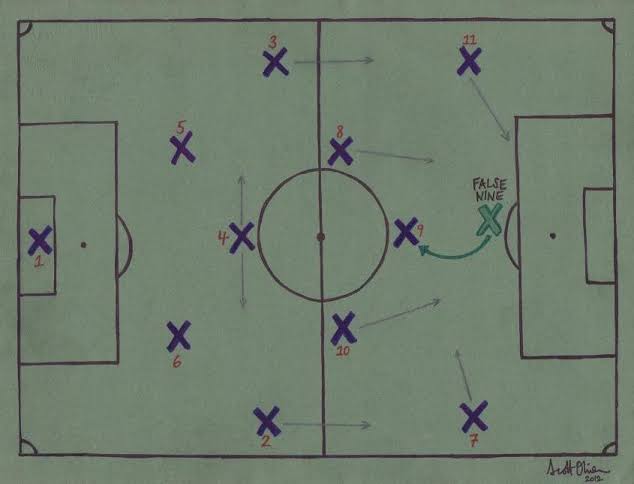False 9
The term ‘False 9’ was popularized by Pep Guardiola’s use of Lionel Messi in the role with Barcelona and Cesc Fabregas’ similar function for Spain at Euro 2012, the idea that a striker can cause havoc between the lines was popularized by the so-called Danube school in 1930s.
Traditionally, the number 9 has always been football’s centre-forward. A ‘normal’ 9 leads, playing on shoulder of the defence or holding up the ball and looking to bring midfielders or a deeper lying striker into the game.
A ‘false 9’ is, rather obviously, not a traditional 9. Pep Guardiola used Messi as a false nine of his ‘Positional Play” theory. Rather than use a striker as a focal point, Guardiola instructed Messi to drop deeper, while his winger either came in field or stayed wide depending on where the ball was. This created at times a triangle among the front 3, or a diamond midfield 4 with the 9 being the tip of it. At least one of the passing option was between the lines of the opposition midfield and defence.
False9’s can be devastating with the right personnel. While most modern teams have swapped man-marking for zonal marking, the movement of the false 9 will create a problem for any back line. Either a centre back pushes up, which isolates his partner, dragging in a full back to cover or leaving an exposed space or he leaves the false 9 to drop, allowing him space and time to pick a pass or shoot. A midfielder could drop to pick up the false 9, but that creates another overload further up the pitch; either way players will find space and receive the ball between the lines will cause problems for the opposition and giving the tactic a final end product.

Thank You For Reading My Article
Best Regards: @mahirabdullah
.jpeg)